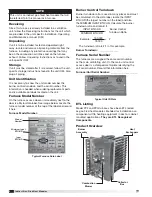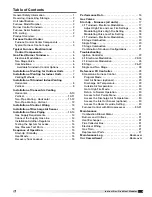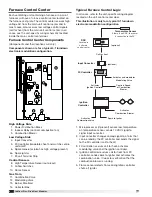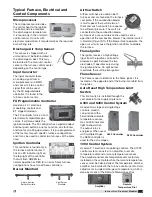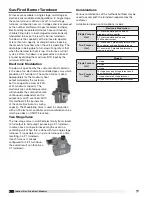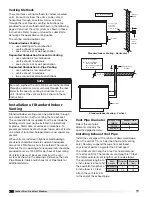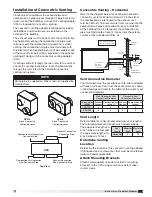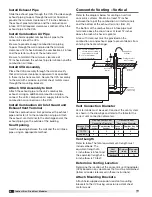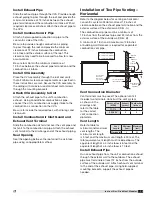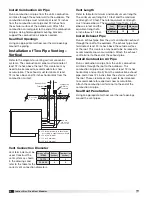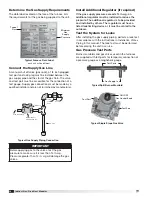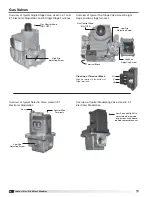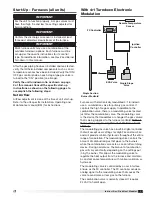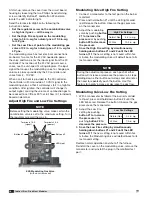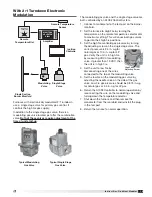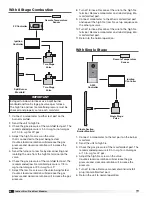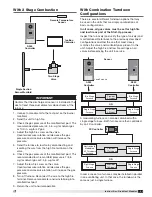
Indirect Gas-Fired Heat Modules
7
Installation of Venting for
Outdoor Units
Follow Guidelines
All of the following guidelines must be followed when
installing the unit.
WARNING
Do not install units in locations where flue products
can be drawn into adjacent building openings such
as windows, fresh air intakes, etc. Distance from
vent terminal to adjacent public walkways, adjacent
buildings, operable windows and building openings
shall conform with the local codes. In the absence
of local codes, installation shall conform with the
National Fuel Gas Code, ANSI Z223.1 or the Canadian
CAN/CGA B-149 Installation Codes.
WARNING
The following guidelines must be followed for all
outdoor units:
1. Building materials that will be affected by flue
gases should be protected.
2. Maintain minimum horizontal clearance of 4
feet from electric meters, gas meters, regulators
and relief equipment. In Canada, the minimum
clearance is 6 feet.
3. The combustion blower discharge on outdoor
units must be located a minimum of 42 inches
from any combustible materials.
4. Do not modify or obstruct the combustion air inlet
cover or the combustion blower weatherhood.
5. Do not add vents other than those supplied by the
manufacturer.
6. During the winter, keep the unit clear of snow to
prevent any blockage of the combustion venting.
Install Stack (optional)
Clearance may require an exhaust stack. Install an
exhaust stack as needed to the exhaust connection on
the unit. Install a vent terminator on the exhaust pipe.
Exhaust transition and vent termination must be
purchased from the factory for proper operation.
Exhaust pipe is by others.
WARNING
The following guidelines must be followed for all indoor
units:
1. Installation of venting must conform with local
building codes. In the absence of local codes,
installation must conform with the National Fuel
Gas Code, ANSI Z223.1 or in Canada, CAN/
CGA-B149 installations codes.
2. For the exhaust pipe, use pipe approved for a
Category III appliance or single wall, 26 gauge or
heavier galvanized vent pipe. The piping is required
to be gas-tight by ANSI.
3. For the combustion air pipe on separated
combustion units, sealed single-wall galvanized air
pipe is recommended.
4. The joints must be sealed with a metallic tape or
Silastic™ suitable for temperatures up to 350°F.
5. A minimum of 12 inches of straight vent pipe is
recommended after the exhaust connection and
before any elbows.
6. Vertical combustion air pipes should be fitted with
a tee, drip leg and clean-out cap to prevent any
moisture in the combustion air pipe from entering
the unit.
7. To reduce condensation, insulate any vent runs
greater than 5 feet.
8. All vent pipe connections should be made with at
least three corrosion-resistant sheet metal screws.
9. Refer to the National Fuel Gas Code for additional
piping guidelines.
NOTE
Vent piping is supplied by others and not supplied by
manufacturer.
NOTE
The drip leg should be cleaned out periodically during
the heating season.
NOTE
Clearances from combustible material for indoor units
are determined by the National Fuel Gas Code and/or
other local codes.
Installation of Venting for
Indoor Units
®


